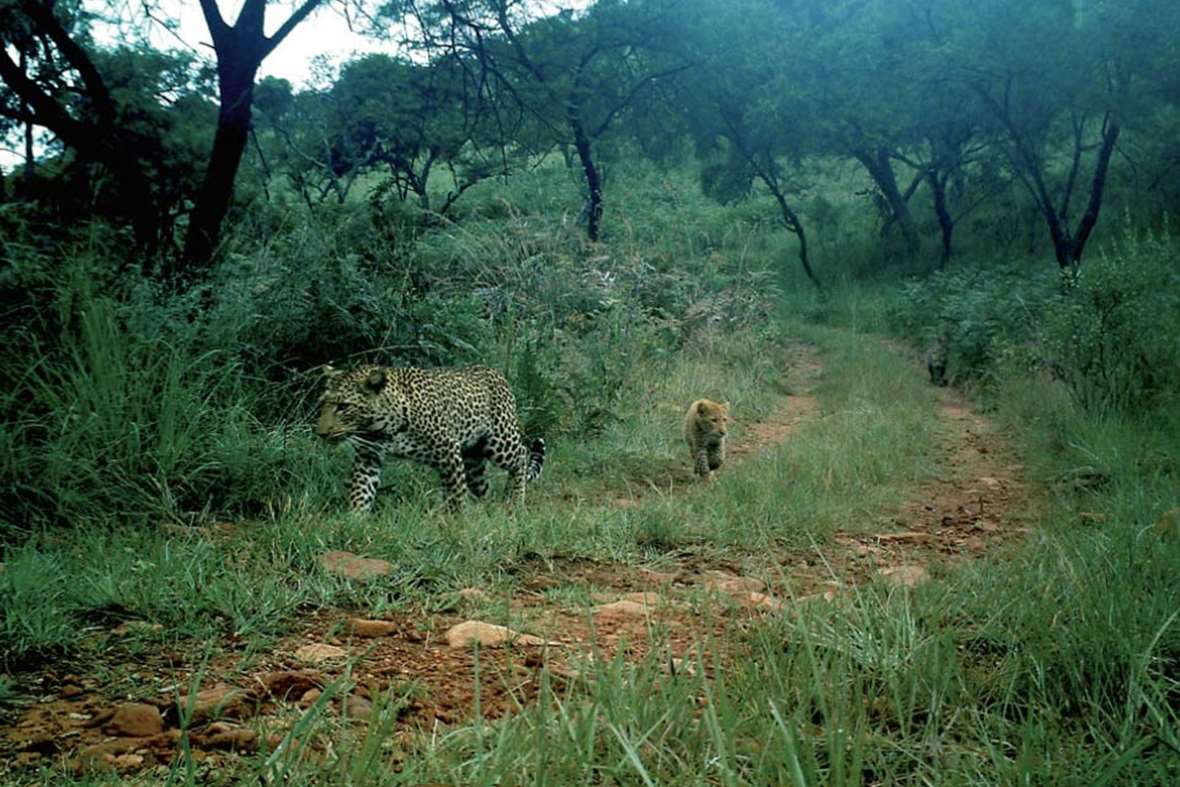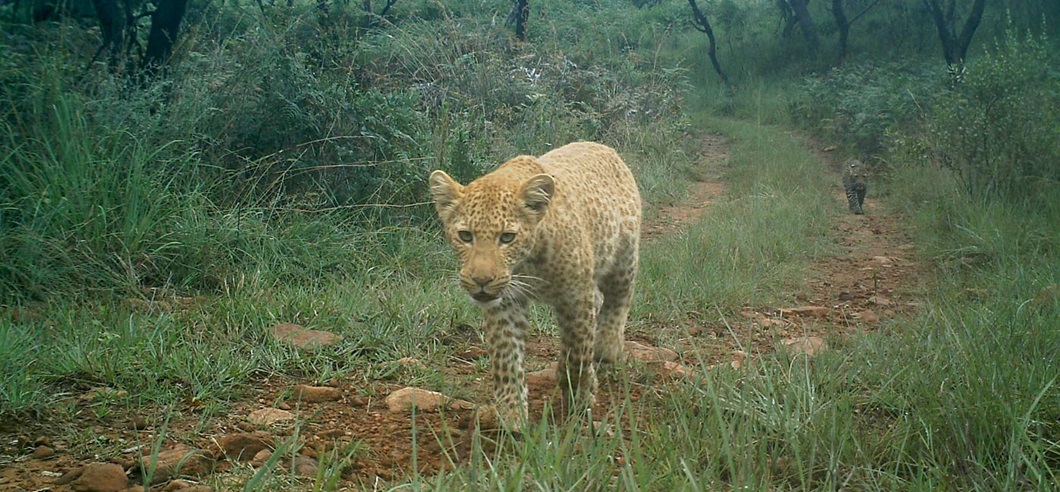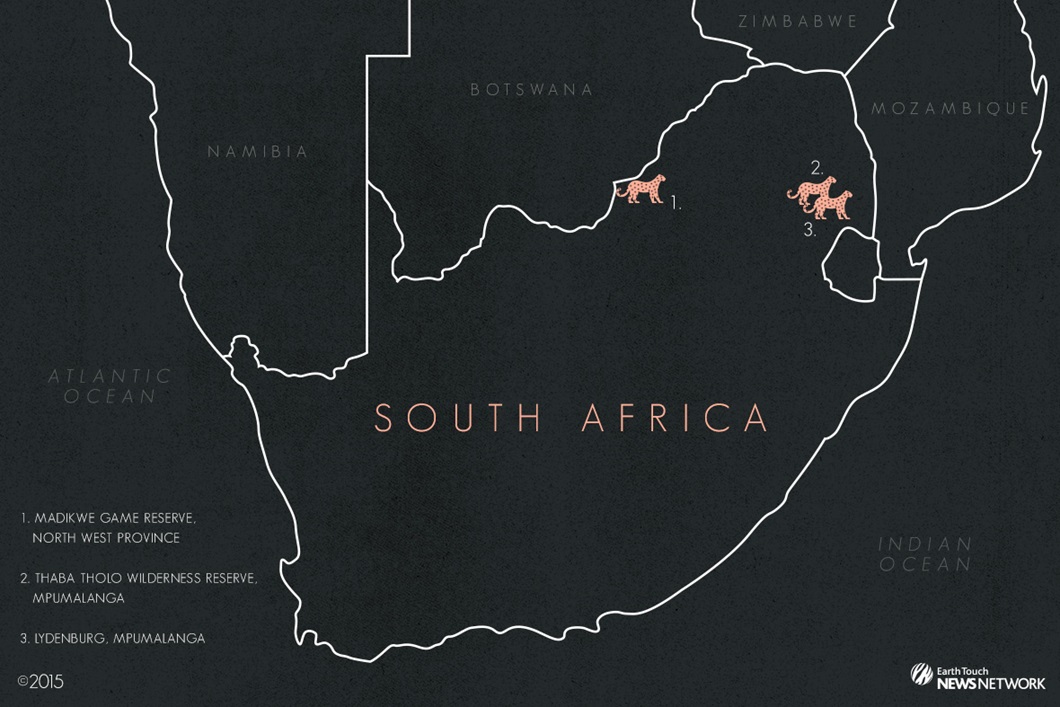By Sarah Keartes July 13 2016
Researchers in South Africa have found evidence of seven "strawberry" leopards, adding to just a handful of documented cases of these ultra-rare big cats.
Most leopards sport tawny coats and black rosettes, but strawberry leopards are reddish in colour with tan or light-brown rosettes – and those pinkish pelts have inspired more than a couple of Pink Panther references in media reports.
Experts are still unravelling the details of the rare mutation, known formally as erythrism, and these latest observations could help. "Reports of erythristic leopards are exceptionally rare," writes the team from Ingwe Leopard Research and the University of Reading in a recent study of the mutation. "To our knowledge, no other records of wild erythristic leopards were documented until 2012, when a male was photographed by a guide at the Madikwe Game Reserve in the North West province of South Africa."
The team initially identified two leopards, but with the help of rangers, conservationists, local communities and social media, that figure has grown to seven cats across the country's North West and Mpumalanga provinces – the most in recorded history. More exciting still, one of those leopards was born during the course of the three-year study.
"Camera traps are the key tool for our work," says Ingwe Leopard Research director William Fox. "We are currently assisting in a genetic study which will hopefully answer the hereditary question, but what we can say is that [producing strawberry-hued offspring] requires two leopards that carry the recessive gene."
It's thought the mutation causes either an overproduction of red pigments or an underproduction of dark pigments in the animals that possess it, and though it's rare in top carnivores, it has also been seen in coyotes, raccoons and badgers. Carriers typically display normal colouring, so Fox suspects that more unusual cats will show up in the coming years, as leopards in the area continue to rebound.
It's no secret that leopards can sport different looks depending on the locale. Cats in arid locations, for example, are generally pale with dispersed and open-centred rosettes. Those that roam humid forests, on the other hand, tend to be darker, with tightly packed, small-centred rosettes. These patterns are thought to help camouflage the predators in different habitats.
But the South African cats are different. "The area where the strawberry leopards are seen is also where black leopards have been recorded," Fox tells us, adding that the region is not particularly arid. The team speculates that these incidents of erythrism could have something to do with feline escapees from the wildlife trade. "Some nine game ranches in South Africa breed leopard," they explain. "And the captive breeding of colour morphs of other species for hunting, such as lion, is known to occur."
It's also possible that habitat loss has pushed some leopards together while isolating others – a chain of events that could have led to related cats interbreeding. Worldwide, leopards have lost three-fourths of their territory to human encroachment, and combined with the unsustainable hunting of their prey, this has forced the cats to hunt and reproduce in overlapping areas.

An adult female leopard ("FS44
le") and her strawberry cub ("animal 7") were seen at Thaba Tholo
Wilderness Reserve. Image: Pirie et al./Ingwe Leopard Research

An adult strawberry leopard ("animal 5") seen outside Lydenburg, Mpumalanga. Image: Pirie et al./Ingwe Leopard Research
"Leopards can adapt their behaviour to suit a changing environment," says Fox. "We have recorded leopards with home ranges as small as 600 hectares and as big as 30,000 hectares. We even had one leopard that regularly roamed across 330,000 hectares as a nomadic lifestyle!"
The strawberry morph is highly prized by poachers, so these cats are at high risk if they stray beyond the protection of their home reserves. And though South Africa has imposed a year-long ban on the trophy-hunting of leopards, many of the cats are still legally killed elsewhere on the continent – and that's something that worries experts who say we still don't have a firm grip on their population numbers.
"Under CITES licence in Africa each year, 2,654 leopards are shot, and yet we don't know how many are left," Fox warns. "What we do know is numbers are in significant decline and more research is needed to establish the real numbers before it's too late."
For more on Africa's leopards, and updates on the strawberry cats, head on over to the Ingwe Leopard Research website.
source



No comments:
Post a Comment